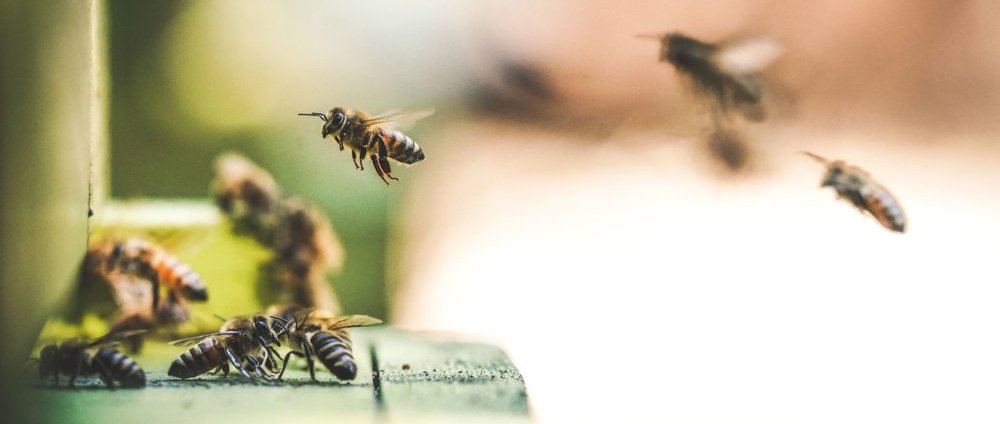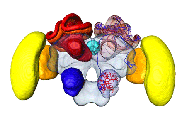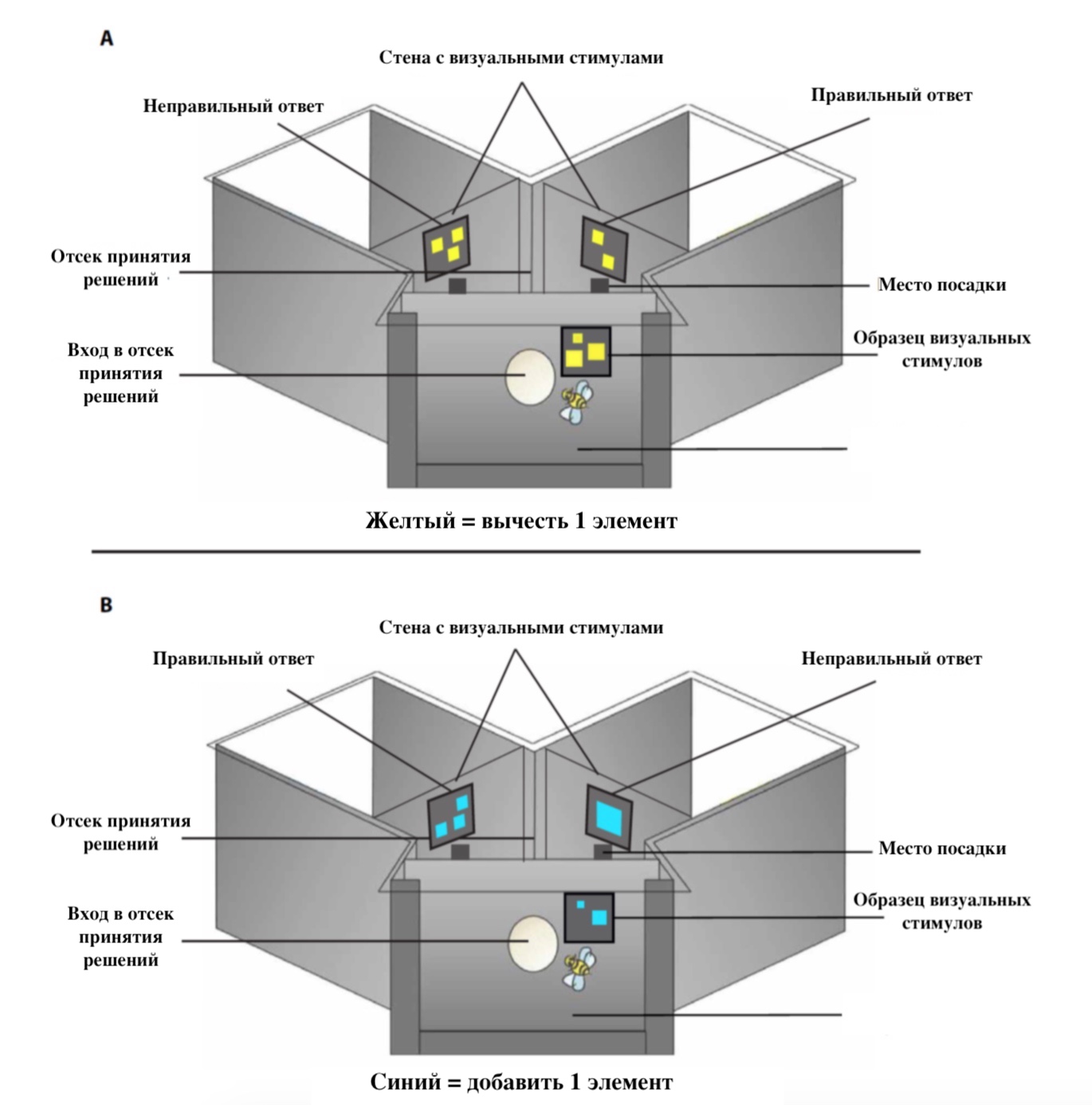Honey arithmetic: addition and subtraction performed by bees

More is not always better. This phrase can clearly describe the ratio of the mental abilities of a creature with the size of its brain. The record holder in the animal world is a sperm whale, whose brains weigh about 9 kg. Among land creatures, this title deserved the Indian elephant with 5 kg of brains at its disposal. The brain of an ostrich is smaller than its eyeball and weighs 26 grams. But the brain of one of the most intelligent species of birds - gray parrots - weighs approximately 118 grams, that is, about 22% of the total body weight. In humans, the brain weighs on average 1.3 kg, while it is the person who is the crown of evolution. These figures clearly demonstrate that the matter is not in quantity, but in quality, so to speak.
But what if a creature's brain weighs only about 0.065 grams and consists of 950,000 neurons (for comparison, a person has about 100 billion of them)? Can such a creature show intellectual abilities that can surprise scientists? Even as you can, and this creature is a honey bee, which is friends with arithmetic. Today we will take a look at the study of the mathematical abilities of bees, which opens up new information for understanding their individual, not collective intelligence. In addition, scientists have begun to better understand the ratios of weight and structure of the brain with the level of intelligence. How did the scientists make the bees count without a calculator, how well did the bees do this task, and what did the scientists find out? The answers will be found in the report of the research group. Go.
Basis of research
When someone says “bees” and “intellect,” an associative answer immediately arises in our heads - the collective mind. And not in vain, because honey bees really show incredible coherence in matters of the existence of a swarm led by the queen-queen. We are not accustomed to considering the bee as an individual capable of highly intellectual actions, preferring to consider them as part of a complex biological organism, which is the whole swarm.
This video shows how researchers conduct experiments with baboons, which demonstrate an understanding of the quantitative concept of "many / little" (more / less).
Scientists note that at the moment there are already known some species of animals that can perform simple mathematical operations to achieve a goal. However, most of the cases recorded were primates. Although amongst creatures with a less developed nervous system, similar skills were noticed. For example, spiders understand the amount of prey, that is, they are aware of such concepts as addition and subtraction.
In addition to identifying such skills, an important aspect is the awareness of mindfulness of actions. In other words, does the same spider understand that he had 3 flies, did he catch another, and now there are 4 of them? Among the many studies can be distinguished the study of gray parrots and chimpanzees, which, in addition to the skills of addition and subtraction, were able to mark the result of this mathematical action with an appropriate number. Thus, these creatures show an understanding of what is happening.
Honeybees are great for learning these skills because they have long demonstrated the ability to learn and memorize certain actions to solve problems from the categories “above / below”, “left / right”, “same / different”, “big / small” etc. It is worth noting that the process of learning and memorizing in bees in the laboratory proceeds much more efficiently and faster if the “reward / punishment” tactic is used, which indicates the presence of attention and, naturally, long-term memory of individual bees.

Here you can find an atlas of the honey bee's brain.
This study is aimed at a more detailed consideration of the mathematical abilities of bees, namely addition and subtraction, under controlled conditions using the above tactics. How the experiment is arranged will be considered further.
Experiment
14 honeybees marked with colored lines for identification were made as test subjects. The main elements of the experience can be called a labyrinth in the form of "Y", color differences of visual stimuli (hints) and the ability of bees to fly freely.

The scheme of the experimental maze "Y".
And now in order. The bees were trained to fly through the entrance to the decision-making compartment, where in front of them there is a sample containing yellow or blue elements. If they are blue, then you need to add 1 element, if yellow - subtract. In other words, the bee sees 3 yellow squares in front of it (as in the diagram above), it means you need to subtract 1. Having made the right decision, the bee must land on the pole, above which is depicted the solution of a simple puzzle 3-1 = 2, that is, with two yellow squares. If the sample is blue, then you need to add 1 element (2 + 1 = 3) and perform the same sequence of actions.
Answers (right and wrong) are located 15 cm from the middle of the decision area. For the correct answer, remuneration in the form of 10 μl of a 50% sucrose solution is provided. For the wrong answer - 60 mM solution of quinine (very bitter in taste, which the bees naturally do not like). After each landing of a bee on one or another pole, the latter was cleaned with 20% alcohol and changed to a new one in order to completely eliminate any traces of bees, which can either become additional tips or confuse bees.
It is important to note one more thing: if the bee answered incorrectly and received bitter quinine, it was given the opportunity to fly up to the perch under the correct answer to the sucrose solution. This was done to maintain motivation. Experiments were also conducted when sucrose and quinine were replaced with droplets of ordinary water, thereby leveling encouragement and punishment.

All variants of visual stimuli (tasks and solutions): 108 for subtraction and 108 for addition.
Visual stimuli (squares, rhombuses, circles and triangles) were depicted on a 6x6 cm gray background and covered with a laminate of 80 µl. The colors (yellow and blue) were chosen in accordance with the bees vision.
Such a large number of possible combinations of 216 variants of visual stimuli is due to the desire of scientists to ensure that the bees will not use associative thinking in the process of solving problems. That is, every time they will receive new incentives.
For several training periods of 30 and 60 minutes in length, the bees were trained to find the entrance to the maze, the entrance to the decision-making compartment, and the perch where the sucrose and quinine will be placed. In total, each bee spent 100 visits (total for the tasks of subtraction and addition, carried out in random order).
The numbers 1,2 and 4 were used in the addition problems, that is, the incorrect answers were 1, 2, 3, 4 and 5, and the correct answers were 2, 3, 5 (i.e. 1 + 1, 2 + 1 and 4+ one). In the subtraction tasks, the numbers were 2, 4, and 5. The correct answers were 1, 3, and 4, and the wrong ones were 1, 2, 3, 4, and 5. The number 3 was not used during training visits, in order to serve as an innovation in the final tests. .
During the main (final) experiments, the bees had to perform 4 tests of 10 tasks. There were also 10 more tasks without encouragement (sucrose) and without punishment (quinine), and using ordinary water (10 μl) as a motivation for the bee to land on the perch. All tests were conducted in random order.
It is also worth noting that the position of the correct answer and the wrong was such that the bees did not follow the same route (scheme above). That is, for example, on the left in two tests in a row there could be the right answers, either right and wrong, or two wrong ones in a row. In addition, among the tasks were tasks with the number 3, which was not presented during the training tests.
Experimental

results Graphs of the results of training and final tests.
Already at the training stage (100 attempts) there was an increase in the number of correct answers in both the subtraction and addition tasks. Let me remind you that during the training the tactics of encouragement / punishment were used, which contributed to the acceleration of the training of bees (they painfully love sugar and do not like quinine). On chart Aabove, you and I see a beautiful growth curve of correct answers with the number of training visits (z = 8.14, P <0.001). Dotted horizontal line (at the level of 0.5) random random answers are separated. The very same function of the growth of the learnability of bees (14 test specimens) was made by means of a generalized linear mixed model. The black dots on the graph are the mean (± 95%) of the correct answers in accordance with the confidence intervals (the purple region).
Scientists also note that they noticed a difference in the speed of learning in different individuals. This may indicate the individual perception of visual stimuli (tasks and responses) and the individual susceptibility to reward / punishment (sucrose / quinine).
Four variants of the tests can be described as follows:
- Addition. Wrong answer on the same side as the correct one. The task is 3, right - 4, wrong - 5.
- Addition. Wrong answer from the opposite side. The task is 3, right - 4, wrong - 5.
- Subtraction. Wrong answer on the same side as the correct one. Task - 3, right - 2, incorrect - 1.
- Subtraction. Wrong answer from the opposite side. Task - 3, right - 2, incorrect - 4.
The degree of correct answers during all 4 tests was high enough to write it off as a mere coincidence.
In addition problems with correct and incorrect answers, on the one hand, bees chose the correct answer (number 4) in 72.1 ± 3.20% of cases (z = 5.05, P <0.001). In addition, when the correct and incorrect answers were always from different sides, the bees answered correctly in 67.9 ± 2.69% of cases (z = 5.05, P <0.001).
On the one hand, in the subtraction problems with correct and incorrect answers, the results were also at a very good level and amounted to 63.6 ± 2.89% (z = 3.17, P = 0.002), and with the location of the correct and incorrect answers always from different sides - 67.9 ± 3.66% (z = 4.13, P <0.001). These data are shown in the graph of the results in .
Comparing the indicators of all 4 types of tests, scientists came to the conclusion that the bees deal with them at the same level, that is, the direction of correct / incorrect answers or the task itself (subtraction or addition) did not play a significant role on the indicators of learning and the correct execution of tasks.
For more detailed acquaintance with the study I strongly recommend to look into the report of scientists and additional materials to it.
Epilogue
At first glance, such experiments look rather strange and even ridiculous, but they do not lose their informative value. Personally, I am more surprised not by the very purpose of conducting such experiments, but by the method of conducting them. You need to have a lot of imagination to figure out what the researchers have done.
In their conclusions to their own work, scientists touch upon amusing observation. First, human young children (toddlers) without knowledge of the language and verbal equivalents of numbers are able to demonstrate fairly high results when performing simple arithmetic tasks on addition and subtraction. An even more interesting example is the Munduruku Indians from South America, whose language lacks verbal equivalents for large numbers. Munduruku does an excellent job with simple arithmetic with numbers up to 5, but has difficulty in problems with large numbers. However, they are able to use approximation (approximation) and achieve relatively accurate results in their calculations.
Similar observations along with the research carried out by scientists confirm the fact that language and preliminary in-depth knowledge and understanding of numbers are not necessary elements for performing simple addition and subtraction tasks. In the future, researchers of bee arithmetic are going to complicate the tasks for their subjects, going beyond the numerical range of 1 ... 5 and adding large numbers.
Neither the size of the brain, nor the social habits of the creatures are fundamental criteria for the successful operation of small numbers. Chimpanzees, gray parrots, spiders, and now bees are a vivid example.
Thank you for your attention, remain curious and have a good working week, guys.
Thank you for staying with us. Do you like our articles? Want to see more interesting materials? Support us by placing an order or recommending to friends, 30% discount for Habr users on a unique analogue of the entry-level servers that we invented for you: The whole truth about VPS (KVM) E5-2650 v4 (6 Cores) 10GB DDR4 240GB SSD 1Gbps from $ 20 or how to share the server? (Options are available with RAID1 and RAID10, up to 24 cores and up to 40GB DDR4).
VPS (KVM) E5-2650 v4 (6 Cores) 10GB DDR4 240GB SSD 1Gbps until spring for free if you pay for a period of six months, you can order here .
Dell R730xd 2 times cheaper? Only we have 2 x Intel Dodeca-Core Xeon E5-2650v4 128GB DDR4 6x480GB SSD 1Gbps 100 TV from $ 249in the Netherlands and the USA! Read about How to build an infrastructure building. class c using servers Dell R730xd E5-2650 v4 worth 9000 euros for a penny?
